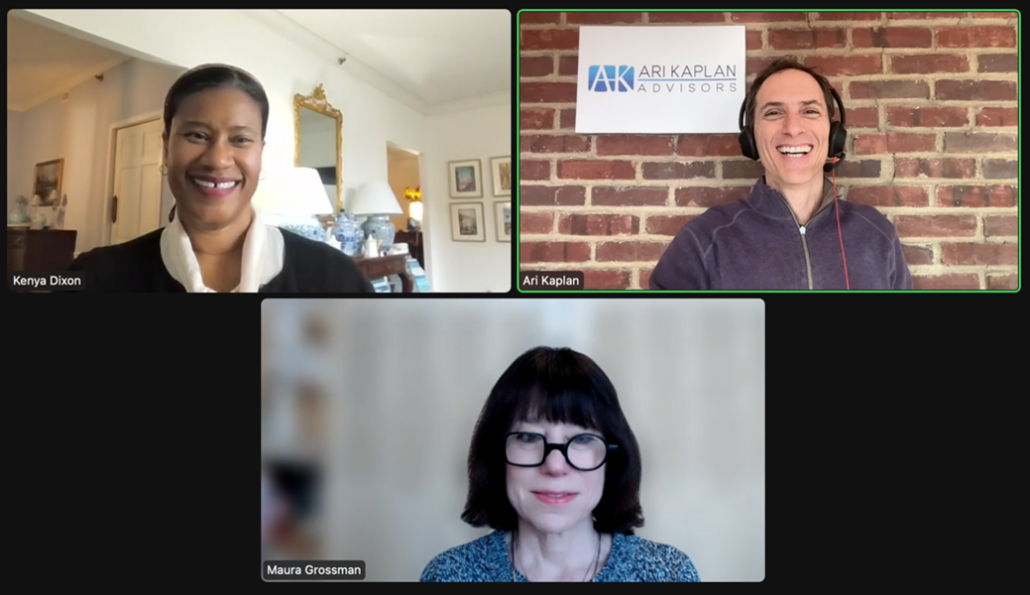Global Advisory Board Chair Ari Kaplan, a legal industry analyst and principal of Ari Kaplan Advisors, moderated a conversation for the ACEDS community with board members: Maura Grossman, a research professor in the School of Computer Science at the University of Waterloo, and the principal of Maura Grossman Law, and Kenya Dixon, the Vice President and Assistant General Counsel at Celerity Consulting Group.
Defining Artificial Intelligence
The discussion began with a focus on how legal teams define artificial intelligence in general. “AI essentially refers to computer programs that perform cognitive tasks that require thought, reasoning, and calculating,” said Grossman. “It is a catch-phrase all for anything a computer can’t do until it can,” she added.
When the direction turned to e-discovery, Grossman, a pioneer in the use of AI in the field, noted that when she and her team began leveraging technology-assisted review, it was considered machine learning, rather than AI. Today, AI is essentially computer technology that
performs tasks that a lawyer once performed and can include technologies some may not understand. “I don’t particularly love the word in the context of e-discovery because we know how the tools we are using in litigation today function,” she said.
Understanding the Limitations of AI
While e-discovery professionals regularly incorporate data analytics and machine learning into their activities, they are not necessarily using artificial intelligence. “Entering data into an e-discovery software application will not provide an analysis of the theory of your case yet,” said Dixon. “ChatGPT and similar large language model-based tools will eventually be incorporated into e-discovery software,” predicted Grossman.
Dixon noted that the initial use cases for ChapGPT, such as supervised research, content creation, and template design will expand rapidly, though she cautioned that the practice of law requires human professionals to lead each initiative. “You can ask it for recommendations or suggestions, but it cannot practice law, so I don’t think we are at a point where we have to worry about lawyers or paralegals being replaced by artificial intelligence,” she said. Grossman similarly cautioned legal professionals about inadvertently waving a client’s privilege or confidentiality, by entering a client’s information into open-source tools, or the problem of Gen AI tools ‘hallucinating’ authoritative-sounding but incorrect results. “Right now, you cannot rely on the information that it that it gives you without very careful validation of those results,” Grossman advised.

Predicting How AI Will be Used in E-Discovery
Both Dixon and Grossman offered suggestions for how e-discovery practitioners may be using AI in their activities in the near future. “I think we’ll see artificial intelligence help us with data mapping, information governance, and cyber curity,” said Dixon. It will also likely draft recurring correspondence, respond to simple inquiries, and sort candidates for open positions.
No matter how it is used, “You have to understand the tool and its algorithms sufficiently to explain it to a court, a regulator, or the public,” Dixon added. In fact, “You have to vet and validate your tools in advance of using them by trying them out and comparing the results to prior results you achieved using your current process,” echoed Grossman.
Creating Career Opportunities with AI in E-Discovery
The program concluded with specific recommendations from the panelists about how e-discovery professionals can enhance their careers. “Learn how to validate AI properly and understand the scientific method,” said Grossman. Practically speaking, Dixon emphasized the educational benefits of ACEDS and also noted that “There are tons of free courses on YouTube as well.”
Other suggestions included:
- Learning about machine learning and how it works.
- Gaining an understanding of the difference between supervised, unsupervised, reinforcement, and deep learning.
- Taking a class in data analytics or data science.
- Learning what a statistical sample is and how to calculate valid statistics from one.
- Study privacy and security.
“We are in the data and technology age, where law firms are increasingly bringing their data scientists and data analysts into the courtroom so find ways to take advantage of that shift,” said Dixon. “Really learn about these areas and go beyond the very superficial level to gain a true advantage,” added Grossman.

